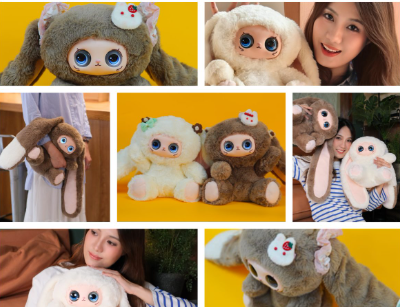AI Toy Market Analysis: How to Create Innovative Products That Win Consumer Attention?
7/9/20255 min read


Understanding the AI Toy Market Landscape
The AI toy market has experienced significant growth in recent years, driven by advancements in artificial intelligence technology and increasing consumer demand for interactive, educational products. As of 2023, the global AI toy market is valued at approximately $2.5 billion and is projected to grow at a compound annual growth rate (CAGR) of 15% over the next five years. This expansion is indicative of the rising integration of technology into children's play and learning experiences, as parents seek toys that not only entertain but also foster cognitive development.
Consumer preferences are shifting towards toys that offer personalized experiences and adaptive learning capabilities. AI-powered toys, such as interactive robots and educational games, are designed to engage children in unique and meaningful ways. These products utilize machine learning algorithms to adapt to a child's learning pace, enhancing educational value and maintaining user engagement. Data suggests that parents increasingly prioritize products that promote STEM (science, technology, engineering, and mathematics) education, making AI toys particularly appealing.
Key players in the industry, including well-established brands like LEGO and Mattel, have begun to incorporate AI technologies into their product lines, setting the stage for heightened competition. Emerging startups are also entering the market, often bringing innovative concepts to life that capture the interests of tech-savvy families. As companies explore new avenues for product development, leveraging technologies such as augmented reality and voice recognition can provide substantial differentiation in an already competitive landscape.
The demographic of customers most likely to purchase AI toys usually includes tech-oriented parents aged 25-40, who are willing to invest in high-quality educational products. This demographic is conscious of the impact of play on development and favors toys that can grow with their child. Understanding these trends and consumer preferences is crucial for businesses aiming to not only enter the AI toy market but also create products that resonate with today’s digitally engaged families.
Consumer Insights: What Drives Purchase Decisions
Understanding consumer behavior in the AI toy market is pivotal for developing innovative products that resonate with parents and children alike. Several key factors influence purchase decisions, including educational value, entertainment, interactivity, and safety. As parents increasingly prioritize quality over quantity, the demand for toys that combine entertainment with learning experiences is on the rise. According to recent surveys, nearly 70% of parents express a preference for toys that promote critical thinking and problem-solving skills while keeping their children engaged.
Entertainment remains a significant driver, with consumers looking for products that offer varied play patterns and keep children amused without constant adult supervision. AI toys that adapt to a child's learning pace or play preferences can enhance the user experience, making them more attractive options in a competitive market. Interactivity is another important consideration; toys that respond dynamically to a child's actions not only encourage creativity but also enhance cognitive development. The ability of an AI toy to engage in conversations or tailor challenges to the child's skill level exemplifies this feature.
Safety is a non-negotiable aspect for many consumers and influences their decision-making process. Consumers are increasingly aware of the materials used and the technology integrated into toys. Parents gravitate towards brands that demonstrate a commitment to safety and reliability, leading to heightened interest in products with certifications or endorsements from reputable organizations.
Furthermore, changing parenting styles significantly impact toy choices. With the rise of structured play and educational parenting, there is a growing demand for AI toys that align with these philosophies. Case studies show that brands tapping into these consumer insights and addressing unmet needs through innovative features are more likely to capture the attention of today's discerning buyers. By aligning product offerings with these insights, manufacturers can successfully navigate the evolving landscape of the AI toy market.
Innovative Product Development Strategies
In the fast-evolving landscape of the AI toy market, developing innovative products that capture consumer attention requires a structured approach. Central to this process is brainstorming unique concepts that leverage artificial intelligence to create engaging, interactive experiences for children. A multidisciplinary team, comprising engineers, designers, and educators, should collaborate to ensure that the final product is not only entertaining but also educational. This collaboration enables a deep understanding of the target audience's needs and preferences, fostering the creation of toys that truly resonate with both children and their parents.
Prototyping is another crucial step in innovative product development. Creating early prototypes allows for experimentation with various design elements and functionalities. During this phase, integrating AI technology should be a primary focus, ensuring that it enhances the overall usability of the toy. Incorporating features such as voice recognition, adaptive learning, and interactive feedback can significantly improve a product's appeal. However, it is essential to balance complexity with intuitiveness, ensuring that the toy is easy to use while still offering rich, interactive experiences.
Testing prototypes with target audiences provides invaluable insights into their functionality and appeal. By gathering feedback from children and parents, developers can identify strengths and weaknesses and refine their products accordingly. Iterative testing not only facilitates improvements but also helps to align the toys closely with consumer expectations and desires. In this competitive market, successfully integrating consumer feedback into product development can make a significant difference, leading to innovative AI toys that stand out and capture the attention of families looking for quality and engagement in playtime experiences.
Marketing and Positioning Your AI Toy
In the competitive landscape of the AI toy market, effective marketing and positioning are crucial for capturing consumer interest and translating that into sales. A well-defined brand identity not only distinguishes AI toys from other products but also communicates the unique value propositions essential for attracting and retaining customers. To accomplish this, manufacturers should focus on several key strategies.
Firstly, establishing a strong brand identity involves crafting a memorable logo, consistent messaging, and a relatable brand narrative that reflects the innovative nature of AI toys. This identity should be seamlessly integrated into all marketing channels. Currently, social media serves as a pivotal platform for showcasing products, engaging with consumers, and generating buzz. Implementing targeted campaigns across platforms like Instagram, TikTok, and Facebook can effectively reach diverse audiences, especially younger demographics who are more engaged online.
Incorporating influencer partnerships offers another avenue for authentic promotion. Collaborating with toy reviewers or parenting bloggers lends credibility to AI toys and introduces them to new audiences organically. Engaging storytelling that illustrates how these toys enhance learning, creativity, and play can resonate deeply with consumers, making them more likely to consider a purchase.
Additionally, selling through online marketplaces and leveraging e-commerce is vital, as these platforms have become primary purchasing venues for consumers. Brands should optimize their product listings with eye-catching visuals and clear descriptions that highlight the innovative features and benefits of AI toys.
Post-launch analysis is equally important. Gathering feedback from early users can provide valuable insights for future improvements and marketing strategies. Engaging with customers through follow-up communications not only nurtures loyalty but also sustains interest in the product long-term. By continuously refining marketing efforts based on consumer experience, brands can maintain relevance and excitement in the rapidly evolving AI toy market.
